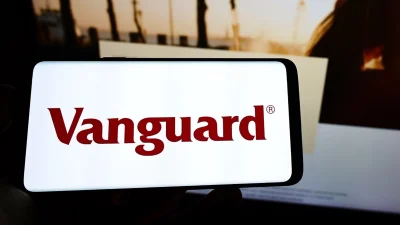Banks and fund managers pair up
In the past two years, all of the big four banks — ANZ, Westpac, National Austraila Bank and the Commonwealth Bank — have forged a relationship with a funds management group.
While the formation of these alliances was not unexpected, and arguably has been on the financial services horizon for the past 20 years, it is interesting that both the economic and strategic conditions have been right for all parties involved.
The merger of Colonial Limited and the Commonwealth Bank in April 2000 kick-started the meeting of the minds between banks and fund managers, and was closely followed by the National Australia Bank’s purchase of MLC in July the same year.
In April this year, the joint venture between ING and ANZ was announced, followed even more recently by the acquisition by Westpac of Rothschild Asset Management in April.
So why has the past two years been so perfect for banks to purchase funds management businesses?
According to Paul Resnik, principal of Resnik Communications, the trail of deals has been a case of the banks “dressing up their balance sheets”.
“If you look like a diversified business, then your recurring income stream will be more solid,” Resnik says.
He says the banks’ interest in funds management businesses stems from the fact that in the past there was more money to be made in the business of being a bank than there was in financial planning. Suddenly there was a new major growth industry and the banks were in danger of missing out. Acquisition became the natural solution.
“There was easy money to be made in traditional areas and wealth management was very small by comparison.”
Apart from this, Resnik says banks were focused on other things.
Product diversification, technology upgrades and consolidation were activities that dominated the 1990s.
“Also, they probably thought they could do it themselves, and are now acknowledging they couldn’t,” he says.
“Finally, there is currently a willingness to sell and a mood to transact. There is an awareness that wealth management is pivotal to any bank’s position in the marketplace.”
While the above factors may all have a place in the strategic thinking behind each of the mergers, this is where the similarity ends.
It is true that each of the big four deals confirms the bank’s marriage of wealth management strategies with wealth creation. However, the design of the deals are very much tailored to the strengths and orientation of the partners.
Resnik describes the NAB/MLC deal as the “peach of all deals and where the premium was the highest”.
He says MLC was a life company and a fund manager that had a strong philosophical commitment to financial planning.
According to MLC chief executive for distribution and wealth management Steve Tucker, the MLC and NAB businesses are under a “dual structure”, making it quite different from other deals in the marketplace.
Tucker says the relationship between St George/Sealcorp is more similar to the NAB/MLC business model because of the packager and distributor relationship — where NAB and St George are the packagers and MLC and Sealcorp are the distributors.
“With the integration with National Australia Funds Management (NAFM), we divested County and NAM because we didn’t want to play in that space,” he says.
After the NAB purchase, Tucker says some 60 projects were initiated — covering enterprise, business units and distribution areas — to facilitate the meshing together of the two businesses.
“People make the mistake of thinking integration is about structure,” he says.
He says the groups have worked hard on meshing the two cultures together and identifying the symbols and values of the two groups, but points out that such things do take time.
He says there is a natural tendency for those people that are taken over to feel they must be more valuable because they have been acquired. Tucker says it is important to make staff feel important and to communicate the vision.
However, at the end of the day, there is no set time frame for how long an integration of this magnitude will take.
“Three years ago it took us one year to sign off the Godfrey Pembroke deal. It took us 100 days to finish the Deutsche deal,” Tucker says.
Critical to any merger situation is the integration of similar functions and the efficient allocation of resources away from functions no longer needed by both businesses.
In April, the NAB announced its Positioning for Growth program and revealed its commitment to reinvest $200 million into its Australian wealth management business over the next three years.
MLC is now putting this program into action with the implementation of the Amazon program aimed at ‘enhancing the adviser experience’.
ING and ANZ are currently in the early stages of their joint venture, with the executive team recently appointed and the business strategy now put in place.
“Because a lot of the work done on integration was done in the planning phase, key parts of the integration will only take up to six months,” ING distribution management group executive director Les Clayton says.
According to Clayton, at its highest level, the joint venture between ING and ANZ represents one combined manufacturing entity, with all the products administered and manufactured out of one area. The advantages of this being the economies of scale and synergies created in the areas of product development, as well as servicing and shared platforms.
“However, in some ways, it is also business as usual with ING servicing national firms, IFAs and owners of equity distribution. And there is the consulting approach to ANZ,” he says.
Clayton says from international examples, it is quite difficult to have a bank, as well as life and funds management operating independently.
“This is why distribution is not included in the joint venture. From a joint venture perspective you can get a lot of early synergy going because you don’t have a legacy of what your going to do with the brand,” he says.
The branding issue has been an interesting aspect of Westpac’s purchase of Rothschild Asset Management last month.
Both parties have been very quick to confirm Rothschild will retain its independence from the bank, even retaining all or part of its name for the better part of next year.
Rothschild chief executive officer Peter Martin confirmed toMoney Managementdays after the deal, the independent nature of the acquisition.
“We’re running the business. We’ve got to report into Westpac and perform well. They’re not telling us what to do,” he says.
“If we perform, there is never any risk of the parent coming in over the top. That is our best defence.”
Meanwhile, Westpac chief executive officer David Morgan highlighted the strategic nature of the acquisition.
“The Rothschild purchase is not the end game in our wealth management strategy. It fills gaps in our distribution reach, delivers better scale and capabilities at the manufacturing and investment management end, and allows us to build on Rothschild’s superior service model,” he says.
While the Commonwealth and Colonial tied the knot two years ago, changes to the structural organisation of the two groups continues to be made.
In February this year, it was announced that Commonwealth Investment Management (CIM) would be combined with Colonial First State Investments to form one asset management business, with the aim of replicating the success of the Colonial First State business model.
However, the separate investment styles of the two groups was to be retained within the combined group.
The fruits of the Commonwealth’s acquisition of Colonial just over two years ago, have come to bear in more recent times, with Colonial emerging a strong player in the funds management arena.
According to Morningstar/Plan for Life figures, the Commonwealth/Colonial group is currently the largest consolidated Australian retail fund manager, accounting for 16.6 per cent of this market as at March 31, 2002. This is a position it has maintained for the past two years.
Recommended for you
Index provider MSCI has unveiled two measures to make it easier for financial advisers and wealth managers to access transparent insights into private assets.
Vanguard has announced a strategic alliance with two US alternative asset managers to develop multi-asset solutions for financial advisers which combine public and private markets.
Clime Investment Management has enacted a range of growth initiatives to boost the firm’s reach with wholesale investors and a new approach targeting the retail market.
Generation Development Group, parent of Generation Life, has entered the ASX 200, having grown its funds under management to almost $4 billion.














